December 8, 2015 – November 20, 2016
A PRAYER FOR THE JUBILEE YEAR OF MERCY
Lord Jesus Christ,
You have taught us to be merciful like the heavenly Father,
and have told us that whoever sees You sees Him.
Show us Your face and we will be saved.
Let us hear the words you spoke to the Samaritan woman:
“If you knew the gift of God”,
as if addressed to each one of us.
You are the visible face of the invisible Father,
of the God who manifests His power above all
by forgiveness and mercy.
Risen and glorified Lord,
let the Church be Your visible face in the world.
Let everyone who approaches You through Your ministers
feel sought after, loved and forgiven by God.
Send Your Spirit and consecrate every one of us
with its anointing
so that the Jubilee of Mercy
may be a year of grace from the Lord, and your Church.
With renewed enthusiasm,
may it bring good news to the poor, proclaim liberty to captives
and the oppressed, and restore sight to the blind.
We ask this through the intercession of
Mary, Mother of Mercy
and You who live and reign with the Father and the Holy Spirit
for ever and ever.
Amen.
December 2015
What is a Jubilee?
The Jubilee Year of Mercy – December 8, 2015 through November 20, 2016: In proclaiming a Jubilee Year of Mercy, the Holy Father has exercised the authority given to him by Jesus Christ (Mt 16:19) and opened for us a time of grace. The Year of Mercy is about many things: The tender mercy God shows to all mankind, repentance from sin as our response to God’s mercy and the mercy we are called to show to others. At the center of this holy year is our personal relationship with Jesus Christ. We are called to look honestly at our relationship with the Lord, to turn from the ways that we have preferred our own will to his and to seek reconciliation. This puts the Sacrament of Penance and Reconciliation at the center of the Year of Mercy. During this holy year, each of us is invited to renew or begin a commitment to the regular practice of sacramental confession. It is here that we will hear with our ears and experience in our hearts Jesus’ most consoling words, ” I absolve you of your sins.” Even if it has been a long time since your last Confession, Pope Francis encourages you, “…Do not lose another day. Go, the priest will be good….Dear friends, celebrating the Sacrament of Reconciliation means being enfolded in a warm embrace: it is the embrace of the Father’s infinite mercy.”
A Jubilee Year is about freedom. God wishes to act in our lives this year, setting us free and bringing us peace. Let us spend this year actively seeking ways to allow him to do so. – Meghan Cokeley, Office for the New Evangelization, Archdiocese of Philadelphia.
How to Live It: During this sacred time, consider making a commitment to pray the Chaplet of Divine Mercy each day. This 10 minute prayer uses traditional Rosary beads to meditate upon the infinite mercy of God. To learn more about the Chaplet and other ways to celebrate the Holy Year, contact us at www.mdpparish.com or visit the Archdiocesan webpage www.archphila.org/mercy.
Quote from Catholic Tradition: “In the Roman Catholic tradition, a holy Year, or Jubilee is a great religious event. It is a year of forgiveness of sins and also the punishment due to sin, it is a year of reconciliation between adversaries, of conversion and receiving the Sacrament of Reconciliation, and consequently of solidarity, hope, justice, commitment to serve God with joy and in peace with our brothers and sisters. A Jubilee year is above all the year of Christ, who brings life and grace to humanity.”
To continue reflecting on this theme, consider one of these resources:
Recommended Reading for the Month: Misericordiae Vultus, Bull of Indiction for the Jubilee, Pope Francis
Lighthouse Catholic Media CD: The Second Greatest Story Ever Told, Fr. Michael Gaitley, M. I. C.
POPE FRANCIS ANNOUNCES JUBILEE INDULGENCES:
What is an indulgence?
“An indulgence is a remission before God of the temporal punishment due to sins whose guilt had already been forgiven, which the faithful Christian who is duly disposed gains under certain prescribed conditions through the action of the Church which, as the minister of redemption, dispenses and applies with authority the treasury of the satisfactions of Christ and the saints. An indulgence is partial or plenary according as it removes either part or all of the temporal punishment due to sin”. Indulgences may be applied to the living and the dead. (Catechism of the Catholic Church #1471)
As with other Jubilee years, the Holy Father has instructed that special indulgences be available for the faithful through the duration of the year. The following offers the conditions for an indulgence.
For able-bodied Catholics:
-
Make a pilgrimage to a designated Church with a Holy Door
-
Go to confession
-
Receive Holy Communion “with a reflection of Mercy”
-
Make a profession of faith
-
Pray for the pope and for his intentions
For the elderly, the confined and the ill:
- Live with faith and joyful hope in this moment of trial
- Receive the Eucharist
- or attend Mass and community prayer event through the various means of communication
For the deceased:
- Through the prayers of the faithful, indulgences may be obtained for the dead
For all Catholics:
- Perform a spiritual or corporal work of mercy. Pope Francis said that an indulgence may be obtained when a member of the Faithful personally performs one of these merciful acts.
LOCATIONS OF HOLY DOORS IN THE ARCHDIOCESE OF PHILADELPHIA:
Cathedral of Saints Peter and Paul – Philadelphia Saint John Neumann Shrine – Philadelphia Miraculous Medal Shrine – Philadelphia Shrine of Saint Rita Cascia – Philadelphia Our Lady of Czestochowa Shrine – Doylestown Saint Katherine Drexel Shrine, Bensalem
PRAYER EXPERIENCES DURING THIS JUBILEE YEAR OF MERCY IN OUR PARISH:
during this year of Jubilee, we will be praying the Prayer of the Jubilee Year of Mercy after our Saturday evening and Sunday Masses. The prayer will be in the inside cover of the Missal that is in the pews. Our special intention book that has been in the front of Church near the Saint Anthony statue, will be moved to the back of church in front of the Divine Mercy Shrine. These intentions will continue to be remembered by our Intercessory Prayer Group. The Divine Mercy Chaplet will be prayed each day after the recitation of the Rosary. It will also be prayed by those who pray the Rosary before the 11:30 AM Mass (prayer begins at 11:00) on Sunday. Our Intercessory Prayer Group, which meets on Wednesdays at 9 AM, will begin their prayer session with the Divine Mercy Chaplet. The Divine Mercy Chaplet Prayer booklets may be found at the doors of the Church. On the first Sunday of each month in our bulletin, you will find a reflection on a specific theme for that month during the Jubilee Year. We will have a Mercy Saint of the Month during this year, as well. Information on the Saint will be in the bulletin and it will be posted under the appropriate Station of the Cross to draw our attention to the true source of Mercy – Jesus’ redemptive action of dying and rising. We encourage everyone to please participate in whatever way possible during this Jubilee Year of Mercy with the Archdiocese, parish community or during your private prayer. Corporal and Spiritual Works of Mercy will be highlighted monthly. Special Jubilee Events will be scheduled each month. Check the bulletin for details and be part of this year of grace and mercy.
SAINT OF THE MONTH – December
 Saint John of God
Saint John of God
Recognized the suffering Face of Christ
Saint John of God is considered “the creator of the modern hospital.” He did not, however, limit himself to care for the sick, the care he offered included all the works of mercy.
He wrote in a letter: “So many poor people come here that I very often wonder how we can care for them all, but Jesus Christ provides all things and nourishes everyone. Since this house is open to everyone, it receives the sick of every type and condition, the crippled, the disabled, lepers, mutes, the insane, paralytics, those suffering from all afflictions. Even pilgrims and travelers who come here receive what they need – we furnish the fire, water, an salt, as well as the utensils to cook their food. And for all of this no payment is requested, yet Christ provides. I work here on borrowed money, a prisoner for the sake of Jesus Christ.”
HOLY DOOR OF MERCY OPENED AT THE CATHEDRAL IN PHILADELPHIA
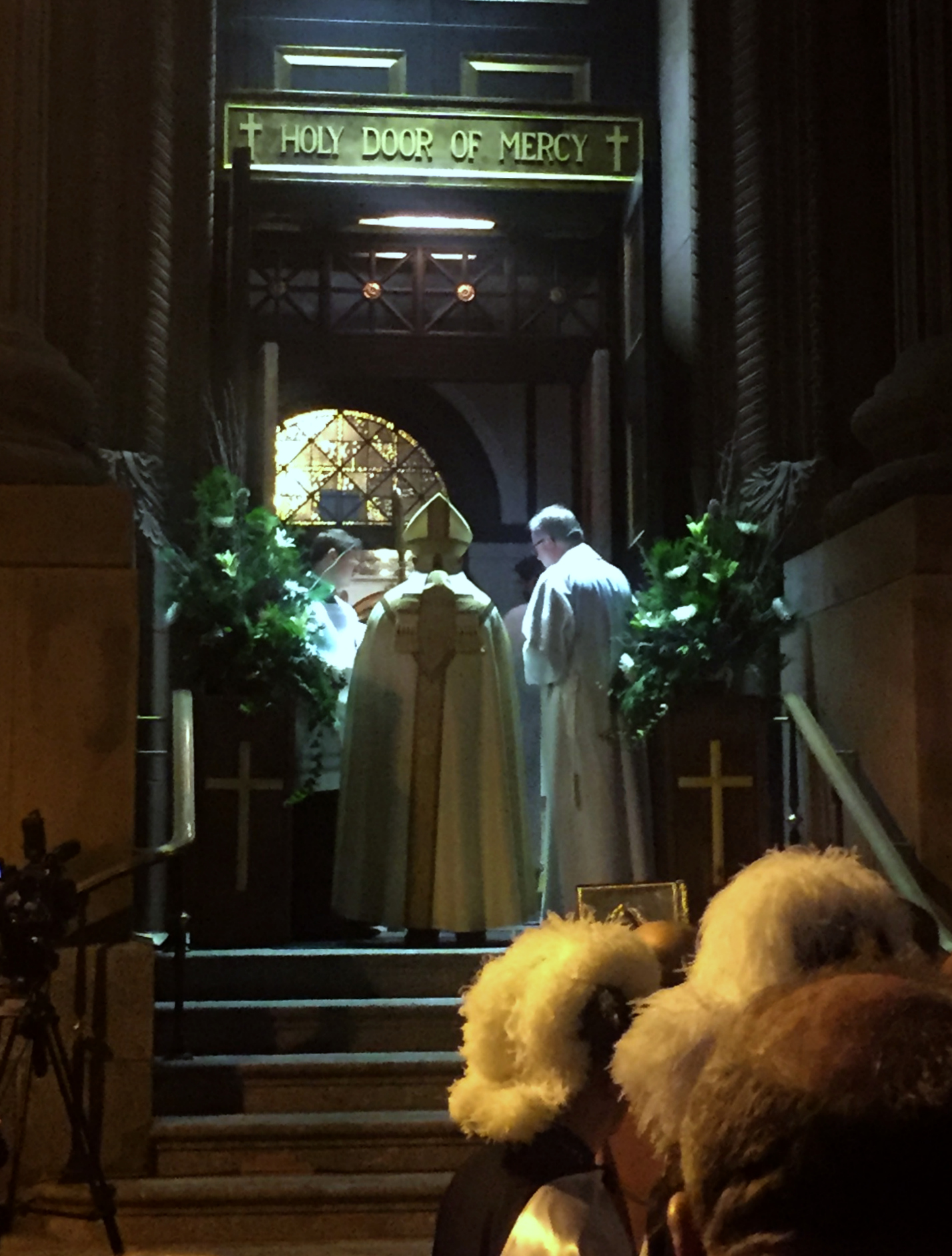 Several parishioners attended the opening of the Holy Door of Mercy at the Cathedral of Saints Peter and Paul in Philadelphia on Sunday, December 13th. The ceremony began in the side chapel of the cathedral, with the choir intoning “blessed are the merciful, for they shall receive mercy” as Archbishop0 Chaput and his assistant bishops initiated the liturgy. The Archbishop, accompanied by the Knights of Columbus and the Order of Malta, led the faithful tot he Holy Door on 17th Street, and ceremonially opened it, passing over the threshold and allowing those present to do the same. Pope Francis has assigned a Plenary (Full) indulgence to anyone who makes a pilgrimage to a Holy Door during the Jubilee Year of Mercy, and has asked all the faithful who are physically able to do so. There are six Holy Doors named in Philadelphia: the primary Holy Door at the Cathedral, along with a Holy Door at all five National Shrines in the Archdiocese (the Shrines of St. John Neumann, Saint6 Katherine Drexel, Saint Rita of Cascia, Our Lady of Chestochowa, and the Miraculous Medal Shrine. Additionally, MDP Parish is organizing a pilgrimage trip to the Holy Door at the Basilica Shrine of the Immaculate Conception in Washington, D.C. Keep an eye on the bulletin for more details! The Pope has also explained ways for the elderly and homebound to receive this Plenary Indulgence if they are unable to make a pilgrimage. See the outline shown earlier in our December post.
Several parishioners attended the opening of the Holy Door of Mercy at the Cathedral of Saints Peter and Paul in Philadelphia on Sunday, December 13th. The ceremony began in the side chapel of the cathedral, with the choir intoning “blessed are the merciful, for they shall receive mercy” as Archbishop0 Chaput and his assistant bishops initiated the liturgy. The Archbishop, accompanied by the Knights of Columbus and the Order of Malta, led the faithful tot he Holy Door on 17th Street, and ceremonially opened it, passing over the threshold and allowing those present to do the same. Pope Francis has assigned a Plenary (Full) indulgence to anyone who makes a pilgrimage to a Holy Door during the Jubilee Year of Mercy, and has asked all the faithful who are physically able to do so. There are six Holy Doors named in Philadelphia: the primary Holy Door at the Cathedral, along with a Holy Door at all five National Shrines in the Archdiocese (the Shrines of St. John Neumann, Saint6 Katherine Drexel, Saint Rita of Cascia, Our Lady of Chestochowa, and the Miraculous Medal Shrine. Additionally, MDP Parish is organizing a pilgrimage trip to the Holy Door at the Basilica Shrine of the Immaculate Conception in Washington, D.C. Keep an eye on the bulletin for more details! The Pope has also explained ways for the elderly and homebound to receive this Plenary Indulgence if they are unable to make a pilgrimage. See the outline shown earlier in our December post.
JANUARY – 2016
 SAINT KATHERINE MARY DREXEL
SAINT KATHERINE MARY DREXEL
Mercy for the Marginalized
She was born Katherine Mary Drexel in Philadelphia to one of the wealthiest families in Pennsylvania. She chose to dedicate her life and wealth to the American Indians after she learned of the persecutions and injustices committed against them by the government. Katherine initiated schools on Indian Reservations and in African – American ghettos.
With 13 other women, she began a new religious community named Sisters of the Blessed Sacrament for Indians and Colored People. Their ministry focus was and continues to be works that help those Indian or Colored people neglected or abandoned. In 60 years of service to the Church and disadvantaged people she founded 145 Catholic missions, 12 schools for Native Americans, 50 schools for African Americans and 49 convents for 500 sisters.
Katherine Drexel lifted up those marginalized people who had fallen because of the unjust treatments of others.
FEBRUARY – 2016
“Through the ministry of the Church, may God give you pardon and peace…” Each time the Sacrament of Reconciliation and Penance is celebrated, the priest begins the formula of absolution with these words. They express the profound reality that is taking place. First, there is the recognition that the Church mediates God’s loving activity of forgiveness of sins. Jesus intentionally created the Church to extend His victory over sin. Second, the Sacrament, like all the others, begins with God’s initiative. Long before we recognize our need for God’s mercy, He is already calling us to Him, extending His offer of grace. That, of course, is what the Sacrament of Reconciliation and Penance is all about: God’s love which overcomes even our sins. There is nothing that we can do in life that will cause God not to love us. As Pope Francis has said so well, it is not God who tires of forgiving us; rather, it is we ourselves who tire of asking for forgiveness! But we never should give up on our desire for holiness. God will forgive us if we approach the Sacrament with sincere contrition. There is no need to be afraid! In this Year of Mercy, Pope Francis has called on the Church to throw open the doors of mercy, to show the vultus misericordiae – the face of mercy – to all those who need it. Whether one receives this Sacrament regularly (a commendable practice) or has not bee to Confession for many years, let this Year of Mercy be a time in which we take advantage of this generous offer of “pardon and peace”. Quotes from Catholic Tradition: “In the life of the body a man is sometimes sick, and unless he takes medicine, he will die. Even so in the spiritual life a man is sick on account of sin. For that reason he needs medicine so that he may be restored to health; and this grace is bestowed in the Sacrament of Penance.” – Saint Thomas Aquinas “When you approach the confessional, know this, that I Myself am waiting there for you. I am only hidden by the priest, but I Myself act in your soul.” – Jesus to Saint Faustina, Diary of Saint Faustina 1602.
 SAINT DAMIEN THE LEPER – 1840 – 1889
SAINT DAMIEN THE LEPER – 1840 – 1889
THE DEATH SENTENCE OF LEPROSY
In 1865, a horrible leper colony was re4alized in Molokai, a rocky and barren promontory located in the Hawaiian Islands. As leprosy had no cure then, those inflicted with the illness were sent off to live there in total and perpetual isolation. It was, in those days, a death sentence.
Eight years later, the first white man voluntarily disembarked on the island with a decision to live out a holy way of life, Father Damien de Veuster. He found himself among roughly eight hundred lepers who were considered “untouchables”. How was he to proclaim the merciful Incarnation of the Son of God? Father Damien did not spare himself. He touched the untouchable, at their tables and ministered the Sacrament to them. His care and Christian living helped his companions to live well in order to die well, for leprosy meant certain death. Father Damien himself was eventually stricken with the leprosy. He wrote to his superiors: “I have become a leper. I think it will not be long before I am disfigured. Knowing the nature of my illness, I remain calm, resigned and happy in the midst of my people. I constantly say with all my heart: Thy will be done.”
MARCH – 2016
During the month of March our focus will be on the Sacrament of Reconciliation. Lent is a wonderful time for all of us to take advantage of the grace that is ours for the asking.
Our Work of Mercy is the Spiritual Work of Mercy to Admonish the Sinner. This begins with ourselves. Let us pray that we can acknowledge our sins, speak them honestly in the Sacrament of Reconciliation and then accept the great mercy of God in the forgiveness of our sins. A question that we need to ask ourselves is “Can we forgive ourselves as God forgives us?” Let us also pray for those among us who have been away from the Sacrament of Reconciliation for a long time. May this Lenten season within the Jubilee Year of Mercy be a time of Grace to deepen our relationship with God through the Sacrament of Reconciliation. 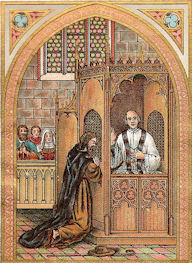
THE HOLY CURE OF ARS SAINT JOHN VIANNEY
MINISTER OF MERCY – Saint John Vianney is seen as a man of mercy. He was called to the priesthood to offer to God’s people the mercy of God through the Sacraments, especially the Sacrament of Reconciliation. Saint John Vianney loved to say that “Priesthood is the love of the heart of Jesus” and ” A good shepherd, a pastor after God’s heart, is the greatest treasure the good Lord can grant to a parish, and one of the most precious gifts of Divine Mercy.” In the parish where Saint John served as pastor, there is a statue of our Lady. It has a heart locket around her neck. In the locket are the names of every parishioner in Saint John’s parish written by his own hand. He loved them greatly.
SAINT FAUSTINA KOWALSKA
THE JOY OF ANNOUNCING MERCY – On almost every page of Saint Faustina’s diary we learn of the yearning of Jesus for His mercy to be known without any limit. Faustina received a direct invitation from Jesus to write the following: “Everything that exists is enclosed in the bowels of My mercy, more deeply than an infant in its mother’s womb.” Why would God continually offer so many heartfelt invitations throughout history to receive His mercy – through the lives and words of His saints? Jesus wishes us to receive with open hearts His great love and mercy so that we can be close to Him. In the life and words of Saint Faustina, we see words of boundless tenderness spring from the mouth of Jesus, and he welcomes and accepts everything, even the ungrateful, again and again. That is God’s gift of Mercy.
APRIL – 2016
Our Work of Mercy for the month of April is the Spiritual Work of Mercy to Counsel the Doubtful. It is through our faith and our example to those who are not certain of God’s love that their faith will grow. Sometimes we do not have to say a word, we just need to practice the faith and be present to those in doubt. Let us also pray for those whose faith is not strong so that during this Easter season they may be touched by the merciful love of the Good God. 
SAINT THERESE OF LISIEUX
DOCTOR OF THE CHURCH – DOCTOR OF MERCY
This saint spoke of mercy in a particularly systematic way and her life and message were dedicated to “Spiritual childhood”. Therese lived her own innocence of mercy to the point that at the end of her life she made an “Act of Oblation to Merciful Love of the Good God.” Therese was able to unite with her heart the two characteristics of God that seem, to those of us who are too grown up, to be in contrast: mercy and justice. According to the young saint, God the Creator and father sees before Him only three kinds of people: the young child who fill Him with tenderness; the young child who has fallen and is hurt; the young child whom He prevented from falling in the firs place. At the same time God is infinitely just and merciful toward all three of these children who throw themselves into His arms, because lowering oneself is precisely due to love…and it is in bending down that the Good Lord shows His infinite greatness…MERCY.
MAY – 2016
Our Work of Mercy for May is the Spiritual Work of Mercy to comfort the sorrowful. The two women that we remember this month, Our Lady and Saint Gianna are women who experienced great sorrow in their lives, yet they were able to rise above it all. As we try to practice this work of mercy will learn that it is an act of love to help another person in any kind of sorrow and to refrain from doing anything that would unnecessarily cause another person more sorrow.
 Mary, Our Mother of Mercy
Mary, Our Mother of Mercy
The following is from John Paul II in Dives in Misericordia:
Mary is the one who obtained mercy in a particular and exceptional way, as no other person has. At the same time, still in an exceptional way, she made possible with the sacrifice of her heart her own sharing in revealing God’s mercy. This sacrifice is intimately linked with the cross of her Son, at the foot of which she was to stand on Calvary. Her sacrifice is a unique sharing in the revelation of mercy, that is, a sharing in the absolute fidelity of God to His own love…that was definitively fulfilled through the cross.
SAINT GIANNA BERETTA MOLLA
A Merciful Mother
The original biblical meaning of the term “mercy” as many people are aware, refers to the maternal affection a mother has for the child she carries within her womb. Saint Gianna Beretta Molla, a woman, wife, mother and doctor, is one such person.
This loving mother and wife, was fully aware that her final pregnancy could cost Gianna her life due to cancer, yet she chose in the words of Blessed Paul VI – “conscious immolation.”
She told her husband and doctors resolutely, “Save the child, not me.” This child was born on Holy Saturday. Gianna is said to have gazed at her child for a long time without a word. One week later she died of complications from the delivery. Gianna lived and died the words from the Book of Revelation – “Be faithful unto death”. Gianna’s death was “merciful fidelity”. She was a mother who preferred to forget herself rather than forget, even for an instant, that the child in her womb whom only she could save.
She was nailed to the Cross with Jesus in fidelity and love for the Father who created her and her child.
JUNE – 2016
Our Work of Mercy is to Instruct the Ignorant. Let us teach God’s message in word and example. It is our responsibility to be the support of those newest members of the Faith – those “children” so to speak in the Faith.
 SAINT JOHN BOSCO
SAINT JOHN BOSCO
Saint John Bosco deserves to be remembered in a special way as this Jubilee Year of Mercy corresponds to the bicentenary of his birth. The entire Church recognized him as a true genius of education aimed directly at the child’s heart. He has the gift of being able to combine the severity of reprimand and discipline with the sweetness of a smile. It is estimated that Don Bosco assisted and educated over one hundred thousand troubled youth in his oratories. Everything Don Bosco did for his boys sprang from an inner oath he once made to God. “I promise God that until my last breath I will have lived for my poor young people. I study for you. I work for you; I am also ready to give my life for you. Take not that whatever I am, I have been so entirely for you, day and night, morning and evening, at every moment.”
JULY – 2016
Our Work of Mercy for July is a Spiritual Work of Mercy to Pray for the Living and the Dead. We see Mary as an intercessor, one who sees with a Mother’s heart and presents our needs to her Son. Let us Pray for all in need.
Mary, Our Mother of Mercy
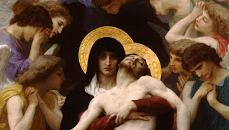 The following is from John Paul ## in Dives in Misericordia: Mary is the one who obtained mercy in a particular and exceptional way, as no other person has. At the same time, still in an exceptional way, she made possible, with the sacrifice of her heart, her own sharing in revealing God’s mercy. This sacrifice is intimately linked with the cross of her Son, at the foot of which she was to stand on Calvary. Her sacrifice is a unique sharing in the revelation of mercy, that is, a sharing in the absolute fidelity of God to His own love…that was definitively fulfilled through the Cross.
The following is from John Paul ## in Dives in Misericordia: Mary is the one who obtained mercy in a particular and exceptional way, as no other person has. At the same time, still in an exceptional way, she made possible, with the sacrifice of her heart, her own sharing in revealing God’s mercy. This sacrifice is intimately linked with the cross of her Son, at the foot of which she was to stand on Calvary. Her sacrifice is a unique sharing in the revelation of mercy, that is, a sharing in the absolute fidelity of God to His own love…that was definitively fulfilled through the Cross.
AUGUST – 2016
Our Work of Mercy for August could be any of the Corporal Works of Mercy; to feed the hungry, give drink to the thirsty, clothe the naked, visit the imprisoned, shelter the homeless, visit the sick and bury the dead. True Charity is given when we see with the eyes of Jesus.
Saint Vincent de Paul
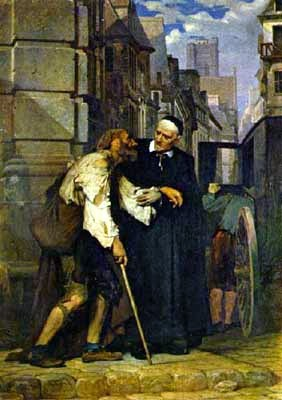
THE SAINT OF CHARITY, THE SAINT OF THE POOR
In his native France, Vincent constantly sought out the poor in desperate situations, whom he believed the Lord had called him to care for personally.
True charity, derives from the gaze that never gets distracted, not even for a moment, form its focus on the living, familiar, beloved Jesus.
Jesus should always be our focus when we stoop to lift those who have fallen and are in need.
SEPTEMBER – 2016
Our Work of Mercy is to Forgive all Injuries. It is our place to forgive others as Jesus forgives us. Jesus shows Mercy to us over and over again with each fall, we rise again in His love, in His forgiveness. We pray that reality each day in the Our Father – forgive us as we forgive others. May we truly live that gift.
Saint Augustine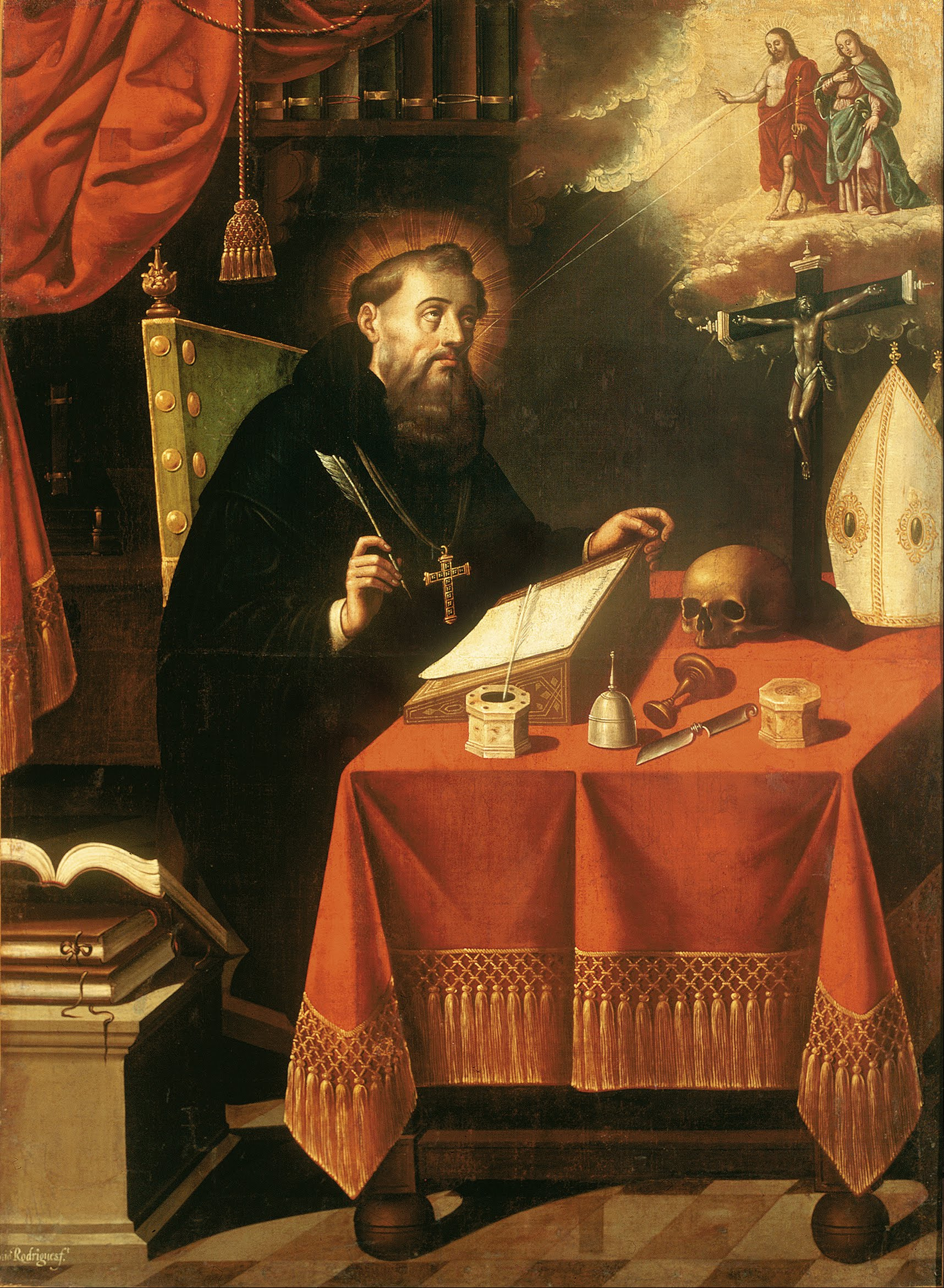 THE PREACHER OF MERCY
THE PREACHER OF MERCY
Saint Augustine felt personally touched by the mercy of God, sensing that God had followed him even when he wandered far from Him. He converted to Christianity at the age of 33 and wrote his Confessions which could also be called Mercy.
He sensed that God makes himself known precisely through mercy, and he wrote: “He extends His mercy to them that know Him and His righteousness to the upright in heart. He does not extend His mercy to them because they know Him, but that they know Him; not because they are upright in heart, but that they my become so.”
Let us pray through Saint Augustine’s intercession that we may be open to and appreciate the mercy that God extends to us through His Passion, Death and Resurrection.
OCTOBER – 2016
Our Work of Mercy is to pray for the dead. Let us remember all who have gone before us and pray that God’s mercy will touch their soul and be raised into the Kingdom of Heaven.
SAINT AMBROSE
BISHOP OF MILAN
Saint Ambrose shows us the heavenly Father, who is the image of the father from the parable in Luke, runs to meet his repentant son to give him much more than his repentance could ever lead to hope.
He runs to you, because He already hears you when you reflect inside yourself, in the secret of your heart. Then when you are still far, He sees you and begins to run to you. He sees into your heart, He hastens so that no one will keep you away from Him and He embraces you.
In coming to you, and being the first to embrace you is a sign of His great mercy. He wants to remove the weight of slavery from your neck and set a sweet yoke on you for Jesus says – “My yoke is easy and my burden light.”
NOVEMBER – 2016
Our Work of Mercy is to Visit the Sick and care for those most in need. Try to see them as Jesus sees them, with compassion and love.
Saint Camillus de Lellis
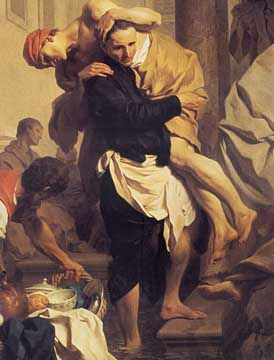
A SAINT OF TENDERNESS
We can have the same face of mercy as that of Christ who embodied the way the Father looks at every person. In order to do this, however, we must contemplate Jesus in our own lives. Saint Camillus served the sick with great tenderness and demanded the best for the patients he served in hospitals.
Camillus would personally greet and embrace patients as they entered the hospital. He washed and kissed their feet, removed their rags and dressed them in clean gowns.
For Saint Camillus patients were a prolongation of the suffering humanity of Christ. He demonstrated this attitude on occasions without even realizing it.
How do we care for those in need? Do we see the face of Jesus?
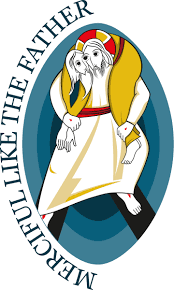

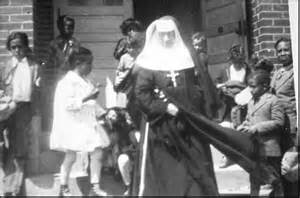 SAINT KATHERINE MARY DREXEL
SAINT KATHERINE MARY DREXEL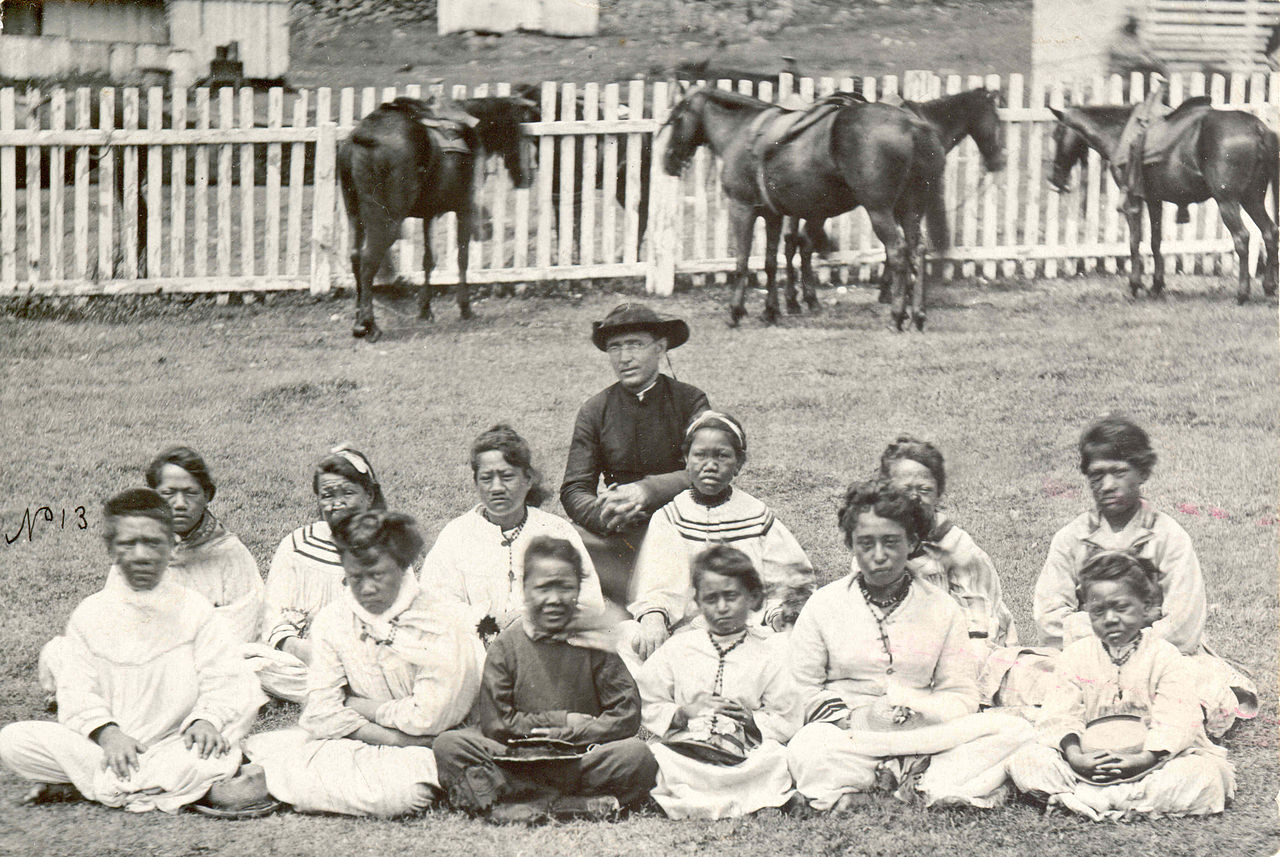 SAINT DAMIEN THE LEPER – 1840 – 1889
SAINT DAMIEN THE LEPER – 1840 – 1889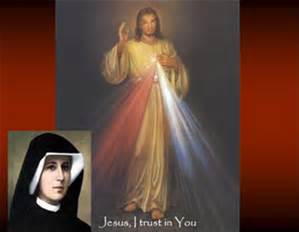
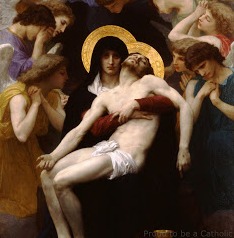

 SAINT JOHN BOSCO
SAINT JOHN BOSCO